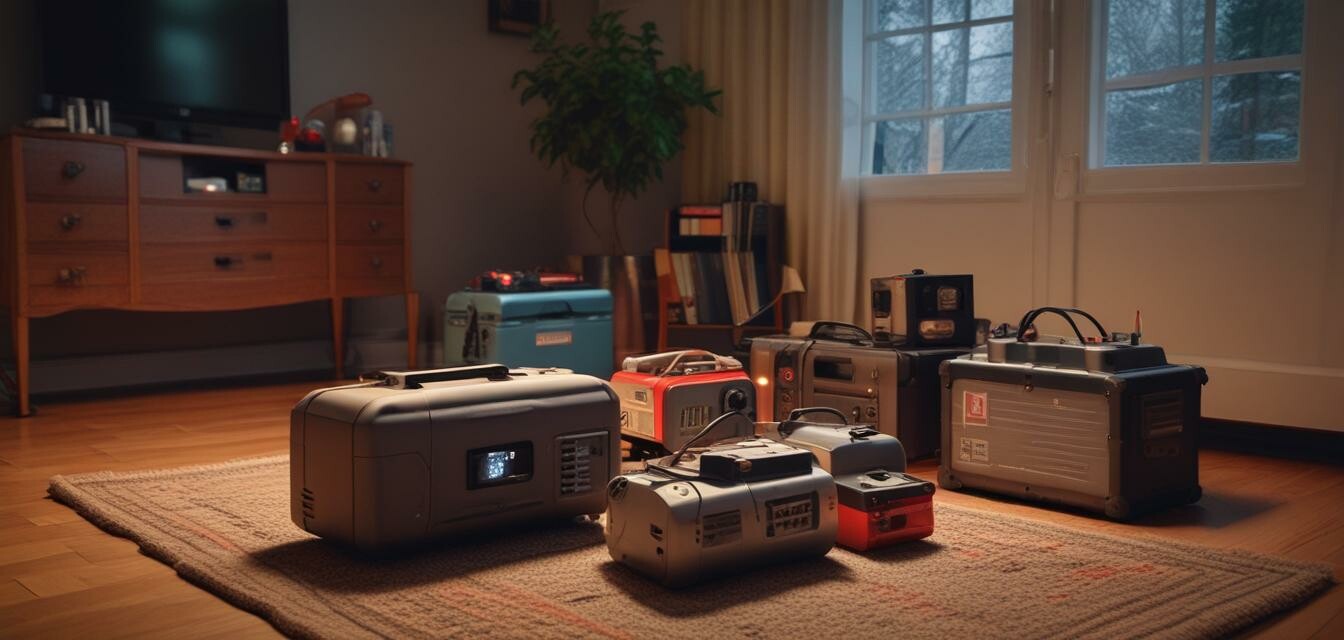
How to Prepare Your Home for Power Outages
Key Takeaways
- Have a reliable battery backup system in place to ensure essential devices stay powered.
- Invest in emergency lighting solutions for visibility during outages.
- Know how to properly set up and maintain a portable generator.
- Include solar charging kits for sustainable energy sources.
- Create a checklist for your emergency energy backup kit.
Power outages can occur at any time due to natural disasters, accidents, or equipment failures. Being prepared is crucial to ensure the safety and comfort of your family during these unexpected events. This guide will provide practical tips and strategies to equip your home for power outages effectively.
Understand Your Energy Needs
The first step in preparing your home is understanding your energy needs. Here are some essentials to consider:
- Identify critical devices that require power, such as refrigerators, medical equipment, and cell phones.
- Calculate the total wattage needed to keep these devices operational.
Create a Power Backup Plan
Once you know your energy requirements, it's time to create a power backup plan:
| Backup Solution | Description | Considerations |
|---|---|---|
| Battery Backup Systems | Store electrical energy for use during outages. | Ensure you have enough capacity for critical devices. |
| Portable Generators | Provide power via gasoline or propane during outages. | Check for noise, maintenance needs, and fuel storage. |
| Solar Charging Kits | Harness solar energy as a sustainable backup option. | Evaluate efficiency, installation, and cost-effectiveness. |
Emergency Lighting Solutions
During a power outage, visibility can be compromised. Here’s how to keep your home well-lit:
- Use LED flashlights and lanterns, which are energy-efficient and longer-lasting.
- Install battery-operated lights in key areas, like staircases and entryways.
- Consider solar-powered lights for outdoor visibility.
Proper Generator Setup
For those considering portable generators, proper setup is vital:
- Choose a safe location away from windows and doors.
- Always follow the manufacturer's instructions for setup and operation.
- Ensure you have adequate fuel and maintain your generator regularly.
Building Your Emergency Energy Backup Kit
Your emergency energy backup kit should include the following:
Checklist for Your Emergency Energy Backup Kit
- Battery backup unit or power station
- Portable generator with fuel supply
- LED flashlights and lanterns
- Multiple charging cables for devices
- First aid kit and emergency contacts
Maintenance and Regular Checks
To ensure your preparedness plan remains effective:
- Regularly test all battery backup systems and portable generators.
- Keep emergency lighting solutions charged and functional.
- Review and update your emergency kit every six months.
Stay Informed and Prepared
Finally, always stay informed about local weather conditions and alerts regarding potential outages. Preparing your home for power outages is a proactive step toward ensuring your family's safety.
Pros
- Enhanced comfort and safety during outages.
- Reliable power for essential devices.
- Peace of mind knowing you’re prepared for emergencies.
Cons
- Initial costs for equipment can be high.
- Requires maintenance and regular checks.
To explore more on energy backup systems and effective strategies, check out our guides on battery backup systems and emergency lighting solutions. With proper planning and resources, your home can withstand power outages effectively.
